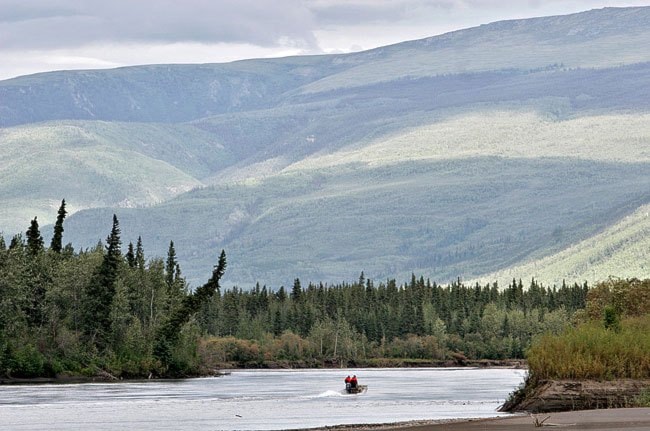UPDATED
The coroner’s inquest into the 2010 drowning death of Mayo RCMP constable Michael Potvin has been postponed.
The inquest was supposed to start May 14, nearly two years after the 26-year-old policeman disappeared in the Stewart River.
Instead, on May 17, a preliminary application from the Attorney General of Canada that challenges the coroner’s jurisdiction to hold an inquest in this case will be heard by territorial court Judge Karen Ruddy. She has also been appointed as the coroner in the case.
“I can’t speak about what (the applications) are because they’re going to be coming before the courts,” said the Yukon’s chief coroner Sharon Hanley.
“You could say that they are putting forth an application to challenge jurisdiction. There will probably be other matters as well, but that’s going to be heard by Judge Ruddy.”
Potvin drowned in the Stewart River on July 13, 2010. He and another officer had taken an aluminum RCMP boat out on the river. On their way back to the dock, the boat started taking on water and capsized.
Potvin tried to swim to shore but never made it. The other officer stayed with the boat and was rescued.
Neither was wearing a life-jacket. But Potvin was wearing soft body armour and a duty belt that included a firearm, baton and handcuffs. It weighed about 10 kilograms or 24 pounds.
His body was found 18 days later, about 50 kilometres downstream from Mayo.
At the time of Potvin’s death, the RCMP said it would be examining the policy that makes all officers wear the 24-pound belts while on duty.
In a news release this week about the Potvin inquest, the Yukon’s RCMP didn’t say anything about the coroner’s jurisdiction or changes to its policy with officers’ duty belts.
It did say there have been internal investigations and investigations by other federal departments, which have “identified causes and contributing factors to the accident and measures to be taken to prevent another tragedy of this kind.”
[image2]
After Potvin’s death, the national force started to focus on better training for officers and better maintenance and inspections of equipment, the release said.
The force also started to encourage its officers to engage more with locals to gain better knowledge about hazards on the land and water. It has also put more emphasis on the importance of their officers using safety devices.
These changes are good guidelines for all Yukoners, the release said.
Meanwhile, the latest government report on drownings in Canada shows there were three in 2010 in the Yukon and two in 2009.
Along with Newfoundland and Labrador, Ontario, Alberta and the other two territories, the number of deaths due to drowning in the Yukon has increased since 2004.
Young men are the most common victims, it found.
Swimming and power boating continue to be the most common activities connected with the tragedies. And drownings most often happen in lakes or rivers during the summer months.
Anne Morgan, who teaches a boating safety and operator’s certification course at Yukon College, said the most important precaution is to wear a life-jacket.
A lot of people have life-jackets in their boats but don’t wear them or don’t have the right size.
They’re not going to help if a person unexpectedly falls overboard, which is a common cause of drownings, said Morgan.
Alcohol also plays its part in Yukon water tragedies, she said.
Misconceptions of the territory’s cold water also plays a role.
“People have the perception that, ‘Why would I bother wearing a life-jacket because if I fall in the water, the water’s so cold I’m going to die anyway,’” she said.
“That’s actually not true. You actually have a considerable amount of time in cold water or in a cold environment before you’d actually die of hypothermia. You have time to make some decisions that could save your life.”
Ignorance is also a major risk factor in the territory.
A lot of new Yukoners don’t know enough about river safety or understand just how large the territory’s lakes are.
Many tourists arrive with plans to paddle the Yukon River to Dawson City without doing much planning in advance, she said.
Knowing the river or lake, and knowing of a safe place to pull out, are really essential, she said.
Ending up on the wrong shore or in the middle of Lake Laberge can mean “big trouble,” she said.
The wind can pick up, the weather can get worse and there are few people to rescue those in trouble, she added.
The course she offers at the college is eight hours and $80. Successful participants get a boat operator’s certificate, which lasts for life. Youth can take the course and will also be certified for life if they pass the exam.
Experienced boaters can just read the book and take the test for $35 at the college.
The RCMP will checking for certification cards this summer on the water, she said.
Mac’s Fireweed bookstore in Whitehorse carries many navigational charts of the territory’s rivers and lakes, she said.
There are many areas that don’t have charts so most topographical maps can help, she added.
Contact Roxanne Stasyszyn at
roxannes@yukon-news.com
